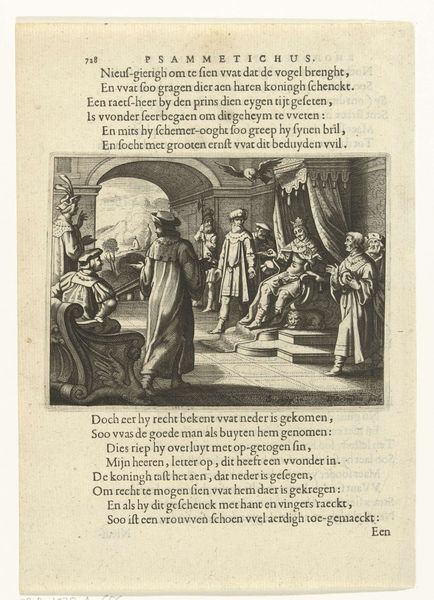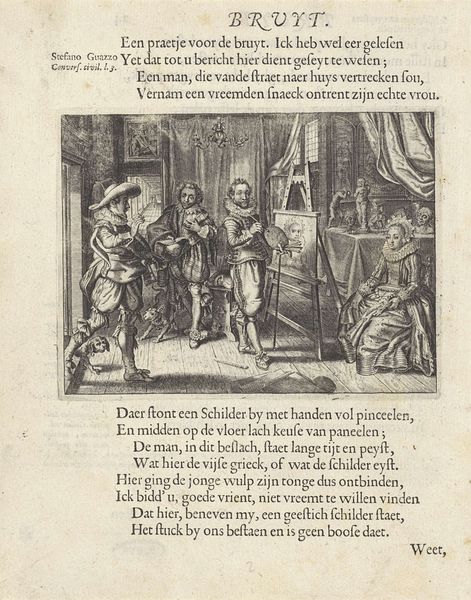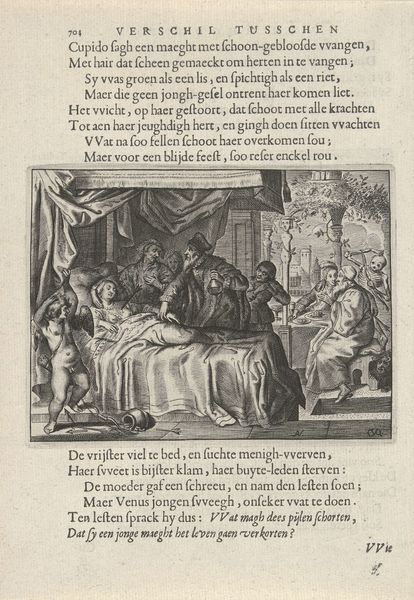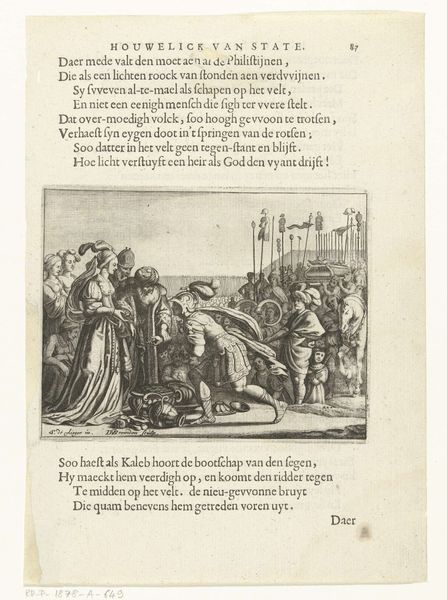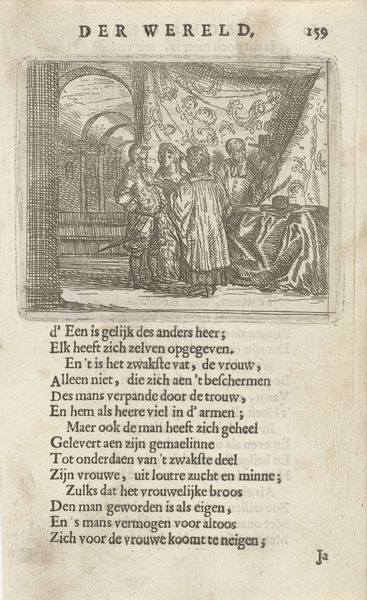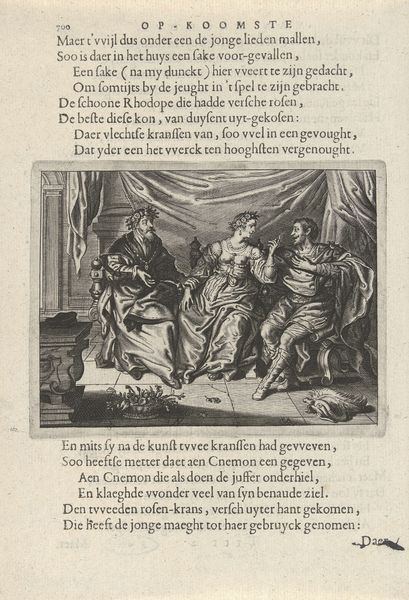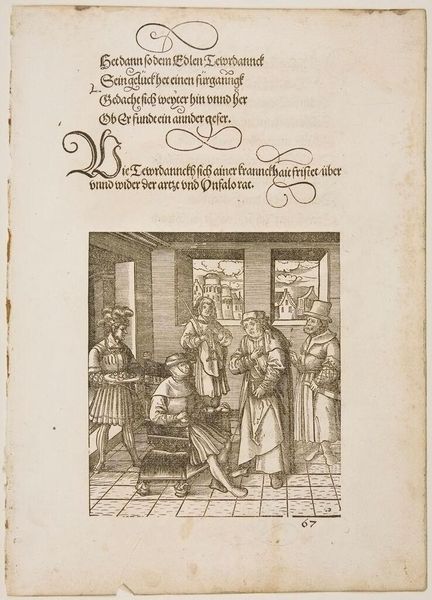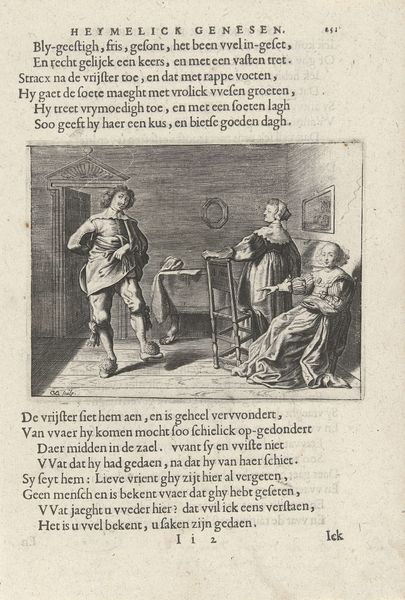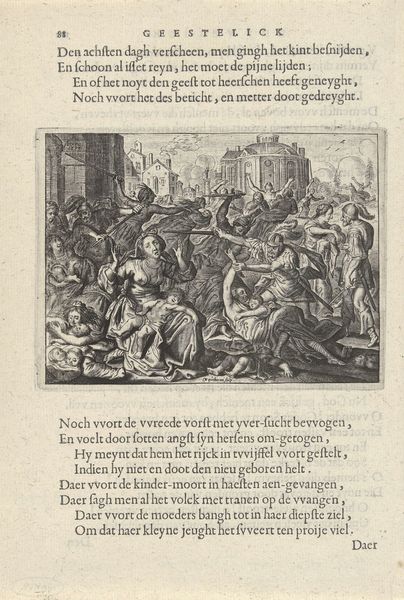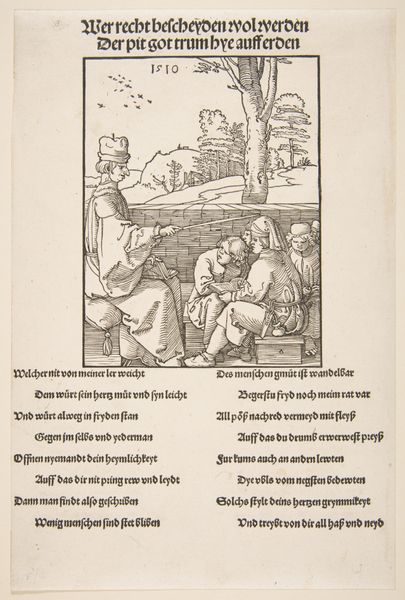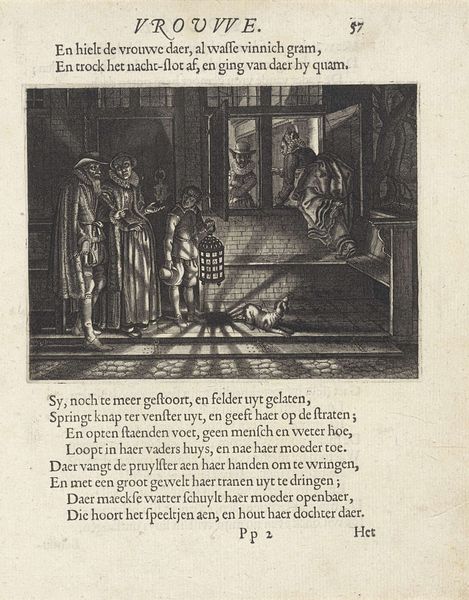
print, etching, engraving
#
narrative-art
#
dutch-golden-age
# print
#
etching
#
old engraving style
#
genre-painting
#
engraving
Dimensions: height 230 mm, width 158 mm, height 105 mm, width 142 mm
Copyright: Rijks Museum: Open Domain
Curator: This 17th-century print, "Actaeon en Jolinde," by Daniël van den Bremden is held at the Rijksmuseum, an etching combined with engraving techniques. The print depicts an interior scene, seemingly a narrative moment unfolding. Editor: Yes, that's right! At first glance, the scene feels intimate yet crowded. There’s a sense of contrasting social classes happening in the room as the left side depicts a more humble setting than the two elegantly dressed figures on the right. How would you interpret the dynamics happening between them? Curator: Considering the social context of the Dutch Golden Age, we see class structures visibly reinforced through fashion, posture and staging. It feels like an uneasy intersection between the lives of those seemingly well off and those who depend on social gatherings at the table to subsist. Editor: I see that. Can you elaborate more on the narrative or symbolic weight within that space? Curator: I’d point you toward thinking about what role prints like these had in constructing and perpetuating class ideals, even romanticizing some problematic economic disparities. What kind of behaviors are being modeled or implicitly critiqued in scenes like these, what moral lesson could one derive from the artist’s construction of "Actaeon en Jolinde?” Editor: So you’re suggesting that these works weren't just pretty pictures, but tools used for defining acceptable social and economic behaviour at the time? It shows a reality, and gives commentary on that reality to promote behaviour, whether intentionally or unintentionally. Curator: Exactly. By examining the subjects displayed in tandem with the socio-economic and cultural conditions of the era, prints like these really speak to how notions of class, gender, and power circulated. I hope looking through that intersectional lens helps you and the other museum goers better understand not just the subject in the work but the why, and perhaps the what now of what remains. Editor: I didn't think of it in those terms, and it offers such a great angle into other historical paintings.
Comments
No comments
Be the first to comment and join the conversation on the ultimate creative platform.
